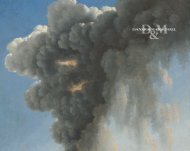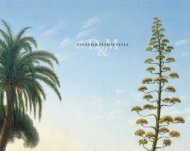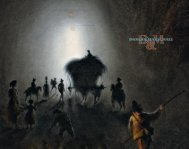Catalogue 2010 - daxer & marschall
Catalogue 2010 - daxer & marschall
Catalogue 2010 - daxer & marschall
Create successful ePaper yourself
Turn your PDF publications into a flip-book with our unique Google optimized e-Paper software.
GIuSEPPE DE NITTIS<br />
‘Impressione Agreste’, Apulia<br />
Giuseppe De Nittis<br />
(Barletta 1846 - 1884 St.-Germainen-Laye)<br />
‘Impressione Agreste’, Apulia, 1875<br />
Oil on panel<br />
Signed lower right De Nittis<br />
Bearing the estate stamp on the<br />
verso Atelier de Nittis<br />
17.7 x 12.8 cm<br />
Literature:<br />
Piero Dini and Giuseppe Luigi<br />
Marini, De Nittis. La Vita,<br />
I Documenti, Le Opere Dipinte,<br />
Turin 1990, II, no. 601<br />
(‘Impressione Agreste’)<br />
68<br />
Piero Dini and Giuseppe Marini date the present oil study to the year 1875. De Nittis visited Naples<br />
and his home town of Barletta between September and November of that year. It was on this extended<br />
stay in southern Italy that he produced a number of oil studies that are stylistically very closely<br />
related to the present panel. The panel was very probably executed at this time, possibly in Apulia.<br />
The massive, block-like segment of the building depicted in the background recalls the architecture<br />
of fortifications and cathedral buildings of Arabic and Norman origin in Apulia. 1<br />
Small-format, unprimed panels are not unusual in de Nittis’s work in the mid-1870s. They<br />
aided informality of composition when he was sketching a rapid impression of the scene before him,<br />
capturing its essential features in a few brief strokes. In the present panel, his brushwork is fluid<br />
and his use of paint sparing, creating transparent tones that allow the brown ground of the wood<br />
to show through. This ground acts as a medium tonal value and parameter to which all remaining<br />
tonal values relate. De Nittis handles architectural elements in terms of flat, contrasting planes of<br />
light and shade. Figures are reduced to dabs of pure white and black paint.<br />
The present study has less in common with French Impressionism than with the variety of<br />
realism practised by the group of young plein-air painters known as the Macchiaioli [spotmakers].<br />
De Nittis had first encountered them in Florence in 1867. The realistic capturing of light effects<br />
and the primacy of colour over form are clearly his central preoccupations. Motifs such as the street<br />
scene in the present sketch, or rain-washed surfaces, hazy meadows, dusty streets and similar subjects<br />
predominate in the oil sketches of this period.<br />
De Nittis is the best-known Apulian painter of the nineteenth century. He returned<br />
frequently to the region of his birth. He took up his studies at the Istituto di Belle Arti in Naples<br />
but early on abandoned the academic tradition of his training and turned to plein-air painting. He<br />
moved to Paris in 1868 and quickly made his name in artistic and literary circles. The outbreak of<br />
the Franco-Prussian War in 1870 prolonged his visit to Italy and he did not return to Paris until 1873.<br />
Soon after his return, he participated in the first exhibition of ‘impressionist’ painting organized<br />
by Nadar in 1874. In London his reputation flourished, like that of his contemporary, James Tissot.<br />
He was appointed a member of the Légion d’honneur during the 1878 Paris World Exhibition at<br />
the height of his fame. He was an influential figure in the world of art and letters and his Parisian<br />
residence was a popular meeting-place for leading French and Italian artists and writers like Degas,<br />
Manet, Daudet and Zola. 2 His widow donated a large body of work from his estate to the museum in<br />
Barletta in 1913.<br />
Enrico Piceni confirmed the authenticity of this study in a letter dated (19)85.<br />
1. See Dini and Marini, op. cit., I, p. 158 and II, nos. 591, 602, 603, 607 and 608.<br />
2. See Saur Allgemeines Künstler-Lexikon: die Bildenden Künstler aller Zeiten und Völker, vol. 26, Munich and Leipzig 2000.






